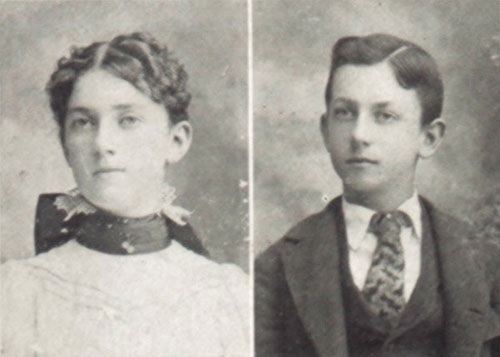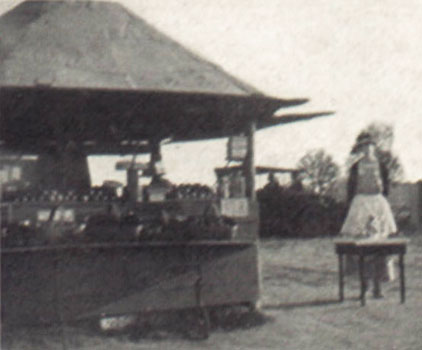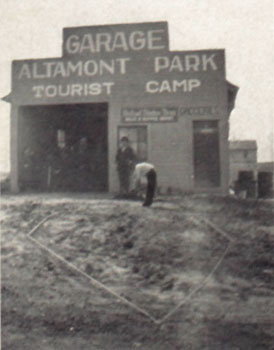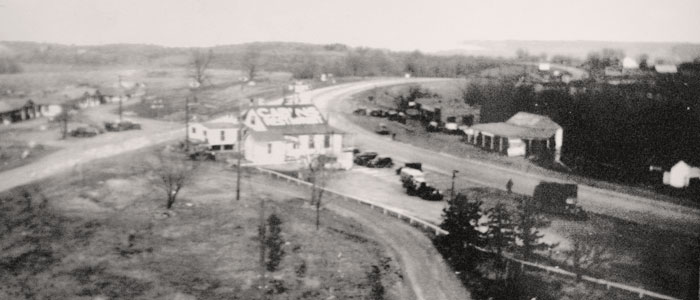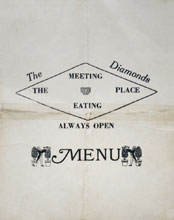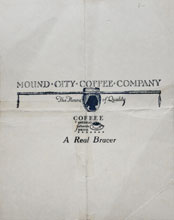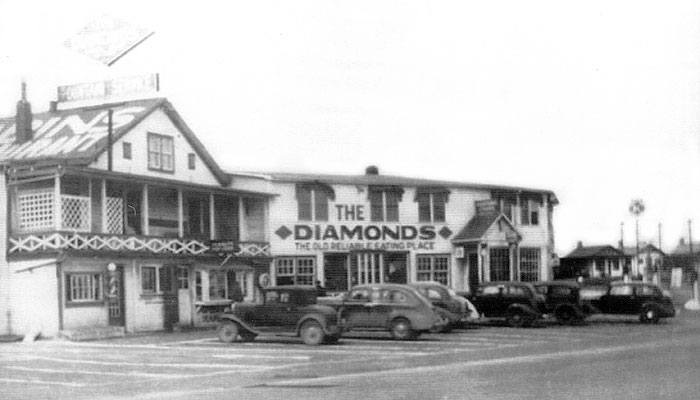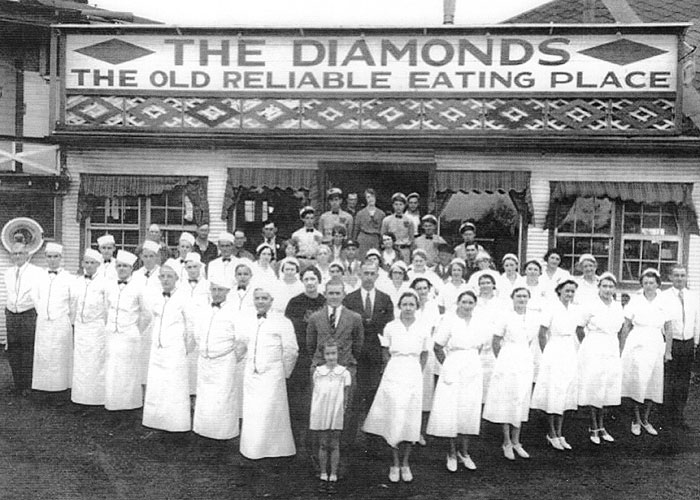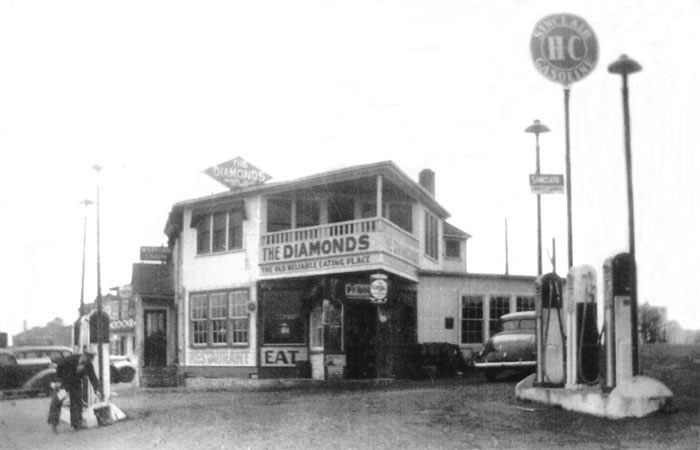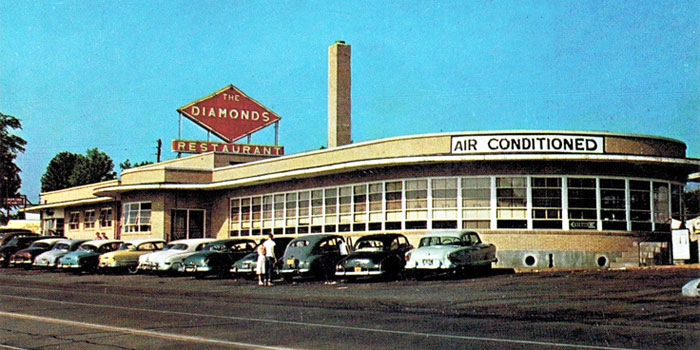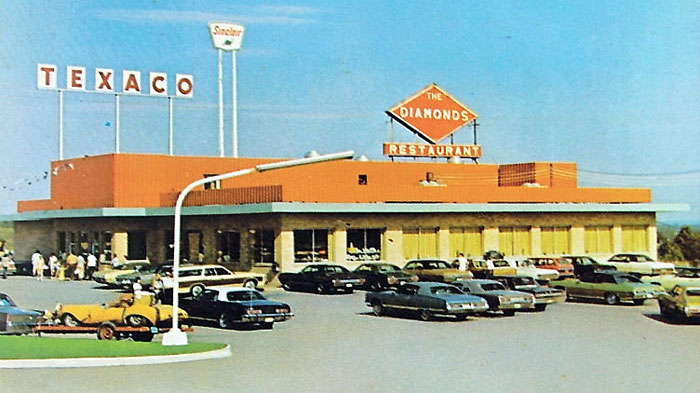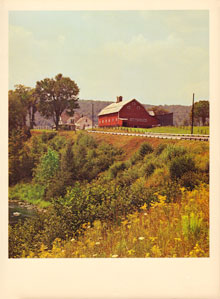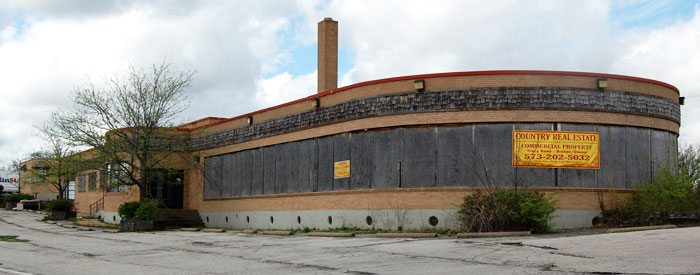|
The Diamonds Spencer Irwin Groff was born in Gray Summit, Missouri in the autumn of 1883. His parents were farmers, as were his grandparents and their parents. They owned a farm in Villa Ridge, a short distance from Gray Summit.
At the age of 19, Groff enrolled at William
Jewell College in Liberty, Missouri, intent on becoming a lawyer.
But homesick for the farm, he returned home after two years to farm
alongside his parents.
Groff became a successful farmer and cattleman, acquiring quite a bit of wealth. After a decade of farming, he grew restless and moved to St. Louis, where he spent his mornings buying and selling on the Merchant's Exchange and his evenings attending Benton College of Law. Groff was a better student than a market speculator; he lost all of his savings and was forced to mortgage his farmland. With his money gone, he returned home to Villa Ridge. Groff's once thriving farm was now run down and, burdened by debt, Groff had no cash to make necessary repairs. Plus, the prices for farm products had bottomed out and profits were hard to come by. * * * * * The road that ran by Groff's Villa Ridge farm forked to the east, as it separated into the St. Louis Rock Road and Old Springfield Road. Where stagecoaches and covered wagons once lumbered, cars now sped past. "Here," thought Groff, "are streams of people going somewhere. Everyone of them is a perspective customer for something. I wonder if I haven't something to sell them." Groff enlisted neighborhood children to help him pick blue damson plums in a nearby orchard. On Labor Day weekend of 1923, he took the plums to the fork in the road and, sitting under a black umbrella to shield him from the sun, he sold every one of them. He then used the cash the plums brought in to buy a stock of soda pop, which he sold until the weather turned cold. The following spring, Groff constructed a bigger and better roadside stand out of an old silo top mounted on four posts. A highway official stopping for a drink remarked that Groff's place reminded him of "Adam's Banana Stand" – and the Banana Stand became its name. As winter approached, Groff installed a gasoline pump so he could sell fuel to motorists year round. He added food to his list of merchandise, first frankfurter sandwiches, then cold buttermilk, fresh fruit, vegetables, pumpkins, eggs and persimmons.
Three years of passing motorists saw trade grow
too heavy for Groff's little Banana Stand; he needed a bigger place.
With a pick, he marked off the outline of a new building, beginning
at the fork in the road and paralleling the highway. It had the
shape of a diamond.
The new building, when erected, had large bunches of yellow bananas painted on its white clapboard sides; it was still the Banana Stand. Groff's sister Ursula began helping in the stand; her homemade pies became popular with the tourists. The new stand never closed. It stayed open all night, with truck drivers passing in the small hours of the morning, welcoming the chance to refresh with sandwiches and coffee. Groff learned that a new concrete highway would replace the dirt road that surrounded his stand. He decided to erect a large new building to replace his second Banana Stand, which was now crowded and inadequate.
The new building, like the one before, was
constructed in the shape of a diamond. It was ready for business on July 3, 1927, the day the new
highway opened. The new building was
named The Diamonds.
The new highway brought more traffic and more business. On Sundays and holidays, the walls of Groff's restaurant bulged with customers wanting to taste the famous food of The Diamonds. As business grew and the floor space seemed to shrink, walls were taken out and new sides and flooring added.
The Diamonds business
was built on service and the quality of its food. Ursula managed the menus and believed firmly in
home cooked foods that were also home grown. Some of that home grown
food came from Groff's vast farmland, which was now being
cultivated.
No one hesitated to stop and eat at The
Diamonds. Packards and Cadillacs were parked alongside Fords at
dinnertime on Sunday afternoons.
Groff never found it necessary to advertise for employees. During the summer, young people were given jobs as waiters, dish washers and service station attendants. Other young men and women found permanent employment. One was a teenager name Louis B. Eckelkamp. In 1930, Eckelkamp began working at The Diamonds as a dishwasher. He progressed rapidly from one job to another, and was made assistant manager in 1933. In 1935, Eckelkamp was given the job of general manager.
Under Eckelkamp's management, the business
continued to grow and prosper. When he began working at The Diamonds
in 1930, there were ten employees. By 1938, there were eighty.
In August of 1938, Spencer Groff decided to retire and sold The Diamonds to Eckelkamp and Noble Key. Key had been with the organization for twelve years, managing the night shift. While Groff sold the business, he retained ownership of the property.
In buying the Diamonds, Eckelkamp said he had
realized a boyhood ambition. "I made up my mind to buy the Diamonds someday
shortly after I started working here eight years ago."
The Diamonds continued to grow, serving 1,480,000 persons in 1947. But on the night of February 25, 1948, the restaurant was totally destroyed by fire. The loss was estimated at several hundred thousand dollars, including building and contents. The Diamonds was rebuilt at a cost of more than $350,000. The grand opening of the new restaurant was on July 10, 1949.
The new building was completely fire proof,
occupying a half acre. It contained a restaurant seating 300
persons, a coffee shop, a cafeteria, a curio shop, a drive-in cafe,
a bus ticket office, a travel bureau, a popcorn stand and a filing
station. Open on a 24-hour basis, it was able to service 2,000,000
customers a year or 5,500 a day.
The following review appeared in the June 4, 1953 St. Clair Chronicle.
The Diamonds' success in its new building was short-lived. In November of 1959, Interstate 44 was opened, replacing the stretch of Route 66 that ran through Franklin County. The new dual lane highway was 900 feet from the road that had benefited The Diamonds with a steady stream of traffic for decades. "It might as well be nine miles," said owner Louis Eckelkamp, who was forced to lay off 45 employees. The once busy intersection that surrounded his restaurant became almost deserted. * * * * * Spencer Groff died in November of 1962. In his will, he left The Diamonds property and surrounding acreage to the Missouri Baptist Foundation.
In June of 1969, The Diamonds was reborn. A new
building was erected in Gray Summit, one and a half miles east of
the original site. The new location provided the same services as
the old, and could serve 200 additional restaurant customers.
The Diamonds continued to serve hamburgers and French fries and fried chicken and more for another 26 years. Along with the food, the restaurant served up souvenirs unique to roadside stops – backscratchers, outhouse-shaped salt shakers, beaded Indian belts and rubber tomahawks. A popular item was popcorn, made in a machine that was more than 50 years old and had survived the fire. "We made it fresh all the time," said owner L. B. Eckelkamp, Louis Eckelkamp's son. People going on Sunday drives would stop in and buy big bags of popcorn and soda. In 1995, the Missouri Highway and Transportation Department began a study of transportation alternatives along highway 100. The study, which wasn't completed until the middle of 1997, contemplated closing the exit at Interstate 44 and Highway 100, the vital crossroads which fed The Diamonds. Eckelkamp said that his restaurant needed a new roof and six new heating and air-conditioning units. "That's expensive, and I don't want to put money into this building only to find out we should have relocated a mile or so to the west." So after the lunch crowed left on Monday, September 11, 1995, The Diamonds was shuttered. * * * * *
In August of 1971, Roscoe and Aria Reed leased
The Diamonds' old Villa Ridge building from the Missouri Baptist
Foundation to establish the Tri-Country Truck Stop. The truck stop
closed in 2006. The building still stands and is said to be haunted.
Copyright © 2019
LostTables.com |
||||||||||||||||||||||||



